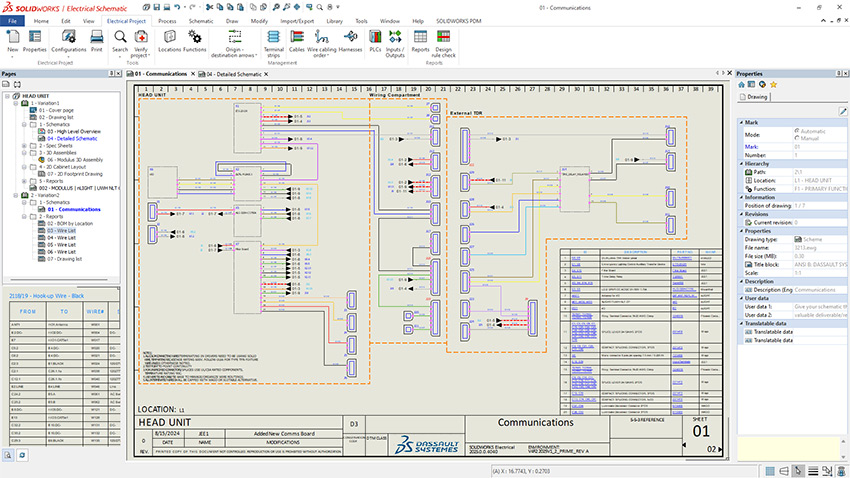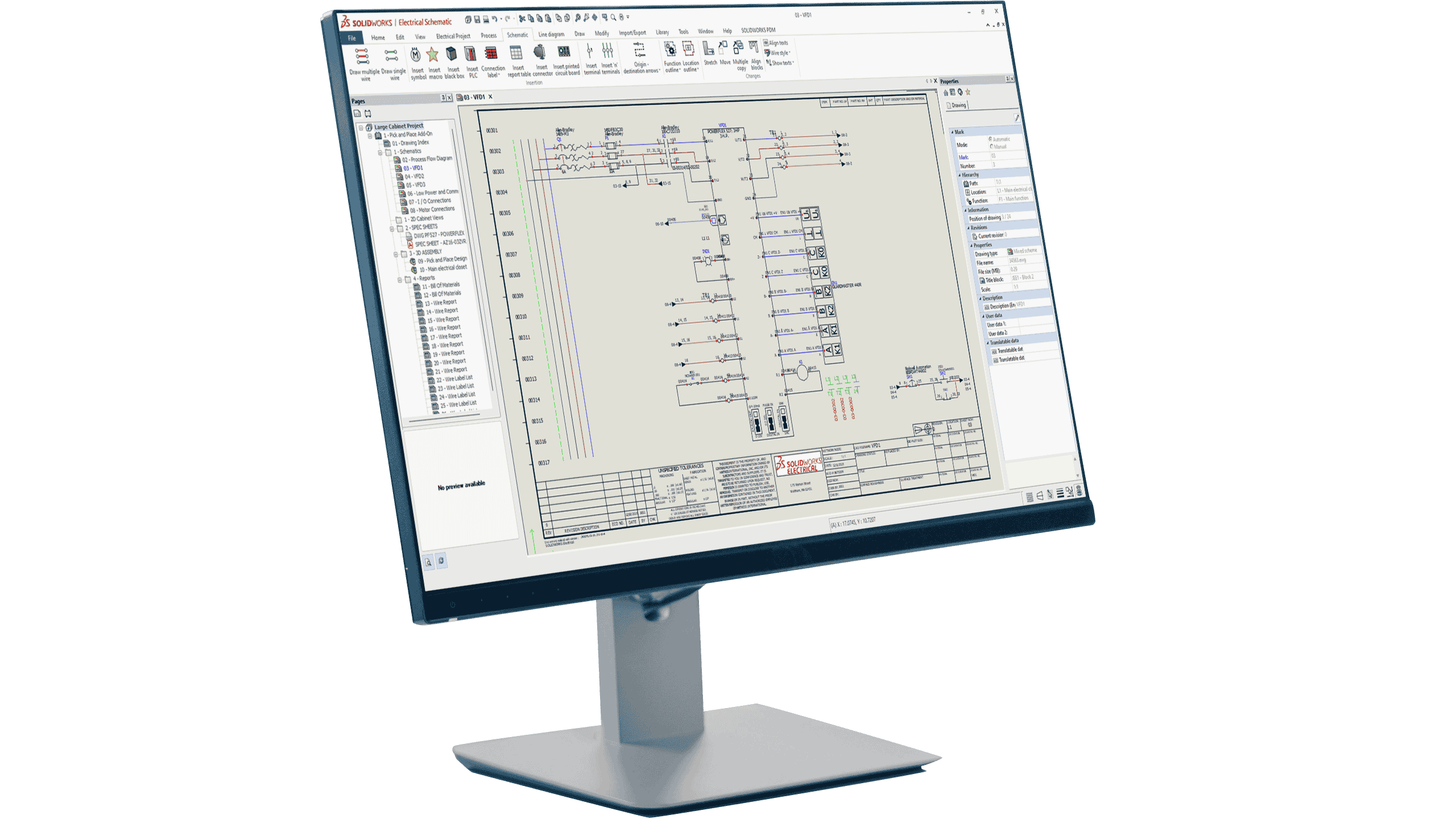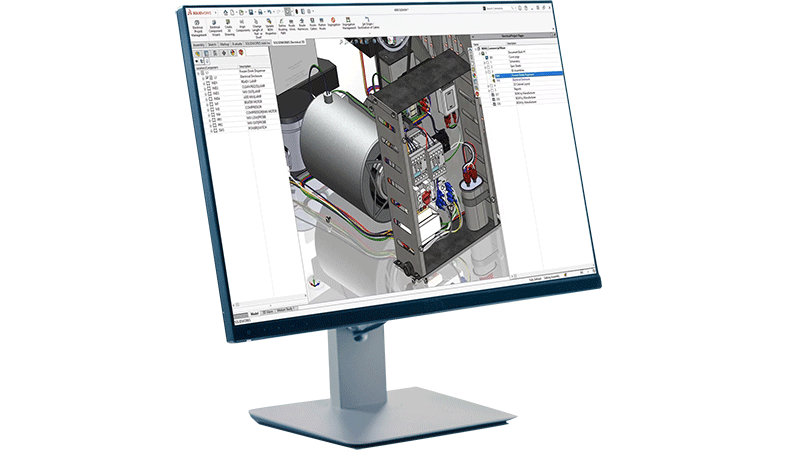Defining Schematic Design
Schematics
Schematic design is the process of generating schematics, which are logical diagrams communicating a process or procedure. These schemes tell you what components are in a system and clearly represent how those components are connected, whether it’s in wiring, piping, or flow diagrams. Schematics are used across disciplines including everything from electrical engineering and PFD/P&ID to pneumatics and hydraulics.
Schematics vs Layouts
Schematic design is a critical step in any design workflow or documentation process. Often, design and engineering projects will start with schematic drawings. Schematics provide a clear, easy to read overview of a system’s components and their connections, and are then used to inform the creation of layout drawings.
Layouts are mechanical drawings that accurately depict the physical arrangement of components in the context of a complete product. These are most commonly done in 2D, but you can also have 3D layouts which have a range of benefits for all teams including higher quality documentation and production-optimized designs.





